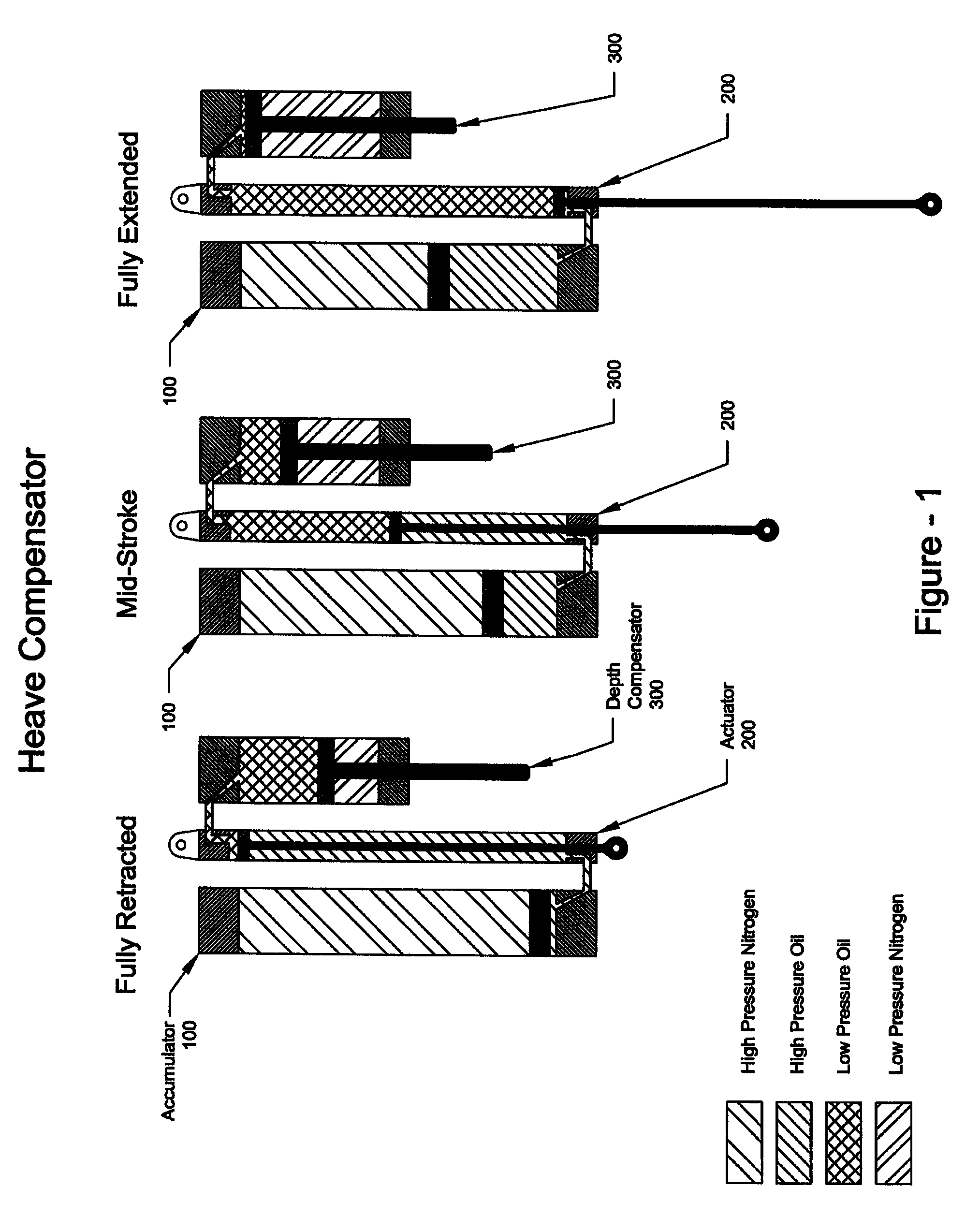Depth compensated subsea passive heave compensator
a heave compensator and subsea technology, applied in the direction of machines/engines, wellbore/well accessories, sealing/packing, etc., can solve the problems of reducing the efficiency of heave compensators, limiting the ability to soften spring systems, and increasing the chance of mass calculation errors rendering heave compensators useless, etc., to achieve greater spring isolation, reduce the effect of depth, and soften the spring system
- Summary
- Abstract
- Description
- Claims
- Application Information
AI Technical Summary
Benefits of technology
Problems solved by technology
Method used
Image
Examples
Embodiment Construction
[0010]FIG. 1 is an illustration of the heave compensator with the piston rod in three different positions, retracted, mid-stroke and fully stroked. There are three major components to the heave compensator. To the left is the accumulator 100 the actuator 200 is in the middle and the depth compensator 300 is to the right.
[0011]FIG. 2 illustrates all of the major sub-components numbered 1 through 21. The component description and major-component group is identified in Table 1.
[0012]The Depth Compensated Subsea Passive Heave Compensator (SPHC) is rigged to the vessel 30 at the sea surface via work wire 35 at padeye 6 with 6 facing up and 19 facing down. The subsea equipment 40 is attached to the clevis 19. The accumulator chamber 2 is precharged such that the static position of the rod 16 is mid-stroke when the subsea equipment 40 is submerged. Pod 16 stokes up and down with vessel 30 motion to produce compensation for the subsea equipment 40.
[0013]On the high pressure side, when rod 1...
PUM
 Login to View More
Login to View More Abstract
Description
Claims
Application Information
 Login to View More
Login to View More - R&D
- Intellectual Property
- Life Sciences
- Materials
- Tech Scout
- Unparalleled Data Quality
- Higher Quality Content
- 60% Fewer Hallucinations
Browse by: Latest US Patents, China's latest patents, Technical Efficacy Thesaurus, Application Domain, Technology Topic, Popular Technical Reports.
© 2025 PatSnap. All rights reserved.Legal|Privacy policy|Modern Slavery Act Transparency Statement|Sitemap|About US| Contact US: help@patsnap.com



